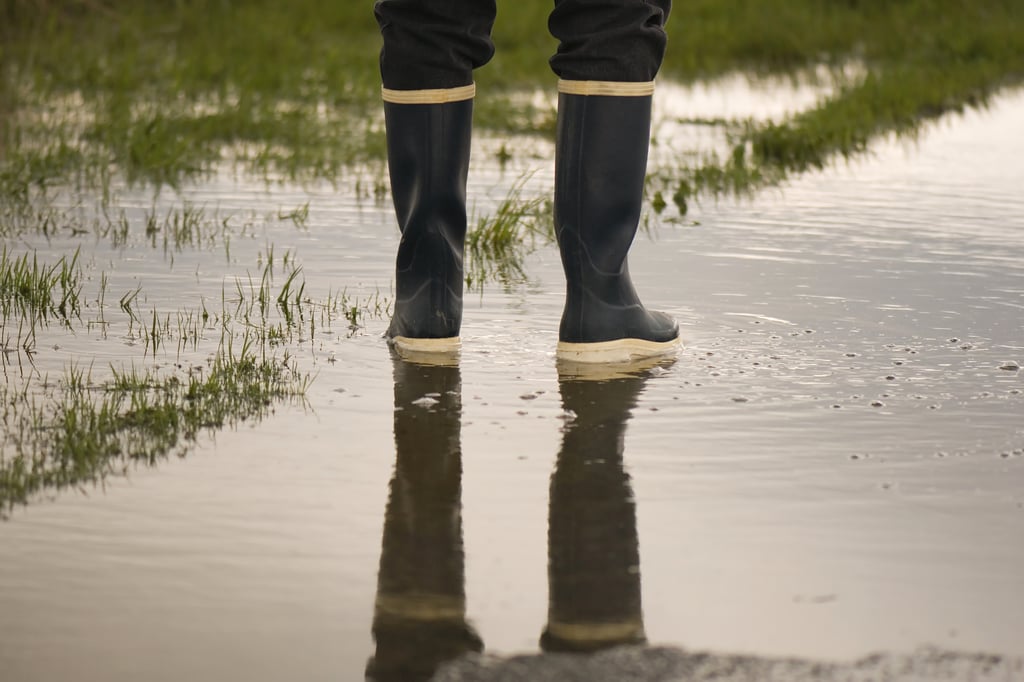At Holganix, we are so grateful that so many of our partners – green industry professionals, distributors and even employees – made it through both Hurricanes Harvey and Irma healthy and intact. That’s a blessing!
As our partners made it back to their homes and back to work, we started to get a stream of questions: Will Holganix Bio 800+ products help us manage plant health problems caused by flooding?

In short – yes Holganix Bio 800+ is a tool in your arsenal to deal with the after-effects of flooding caused by Hurricanes Harvey and Irma.
Bio 800+ is a plant probiotic teeming with over 800 species of soil microbes, nutrient enhancers and microbe food that naturally fosters root growth, builds plant strength, and reduces the need for fertilizer, pesticide and water.
It’s a matter of oxygen…
How long can you hold your breath? Just like humans, turf and plants “breathe”. Oxygen is absorbed through the roots and crown of the plant, and the plant takes in oxygen from pores (stomata) on the leaf surface.
Oxygen is essential to plant health because, without oxygen the plant is not able to break down elements that create energy and without energy, the plant dies.
So, how long can a plant hold its breath? Each species is different. For example, a mature tree can hold its breath longer than turfgrass because a tree’s root system runs deeper than turf’s and can more easily mine for oxygen. When a beaver creates a dam, the creek over flows its bank and a pond is created over the flood plain. If you have seen this happen, you have also seen the trees die. This is because the tree roots are denied a source of oxygen
Assuming that your plants are still alive after flooding, they may be weak and may need help to regrow and recover from stresses caused by salt and pathogens.
Root Development
Holganix Bio 800+ promotes root development through the presence of soil microbes like mycorrhizae fungi and plant growth promoting rhizobacteria (PGPR).
Mycorrhizae and PGPR form symbiotic relationships with plants whereby the plants feed the microbe by secreting sugars and in turn, the microbe performs functions to make nutrients more readily available to the plants.
According to What is Life? A Guide to Biology, mycorrhizae “extracts phosphorus and nitrogen from the soil and releases them inside the roots of the plant, the additional nutrients that the plant receives from the fungi allow the plant to grow faster and larger.” In addition, mycorrhizae search the soil for nutrients that are too far or deep in the soil for the roots to reach, delivering them to the plant.
PGPR is a special class of bacteria that occupy the rhizosphere (area of the soil where roots grow) and have the ability to promote plant growth. They directly affect plant growth by facilitating the availability of nutrients such as nitrogen, phosphorus and iron. PGPR also produce plant hormones like auxins, gibberellins and cytokinins that stimulate plant root and shoot growth in exchange for food sources from the plant.
Turf Recovery From Stress
When the plant is under attack from pathogens or suffering from salt-related stresses, Bio 800+ can help.
Soil microbes like PGPR help the plant through competitive displacement, where PGPR out-compete pathogens for nutrients.
Further, PGPR and Trichoderma fungi have been shown to induce SAR (Systematic Acquired Resistance). SAR triggers a signal in the plant that activates the plant’s defense system such as reinforcing plant cell walls, producing anti-microbial phytoalexins and synthesizing pathogen-related proteins.
If you are concerned about salt-related stress, consider three functions of soil microbes as it relates to salt:
1. Bacteria and fungi secrete plant hormones that induce plant growth – even when salt is overloaded in the soil
2. Plants can selectively reduce sodium uptake, which plant hormones produced by bacteria and fungi, help support.
3. Bacteria can induce tolerance to sodium through Induced Systematic Tolerance (ISR). In this case, bacteria send a message to plants (through the roots) indicating the presence of too much sodium.
Additional questions?
If you have additional questions about how Holganix Bio 800+ can be a tool in your arsenal to deal with the aftereffects of Hurricanes Harvey and Irma, please don’t hesitate to give the office a call!

 |
September 27, 2017
|
6:29 PM
|
September 27, 2017
|
6:29 PM





-1.jpg)
-1.jpg)
-1.jpg)
.jpg)

.jpg)
.webp)
-1%20(1).webp)
-831535-2.webp)




.jpg)
.jpg)